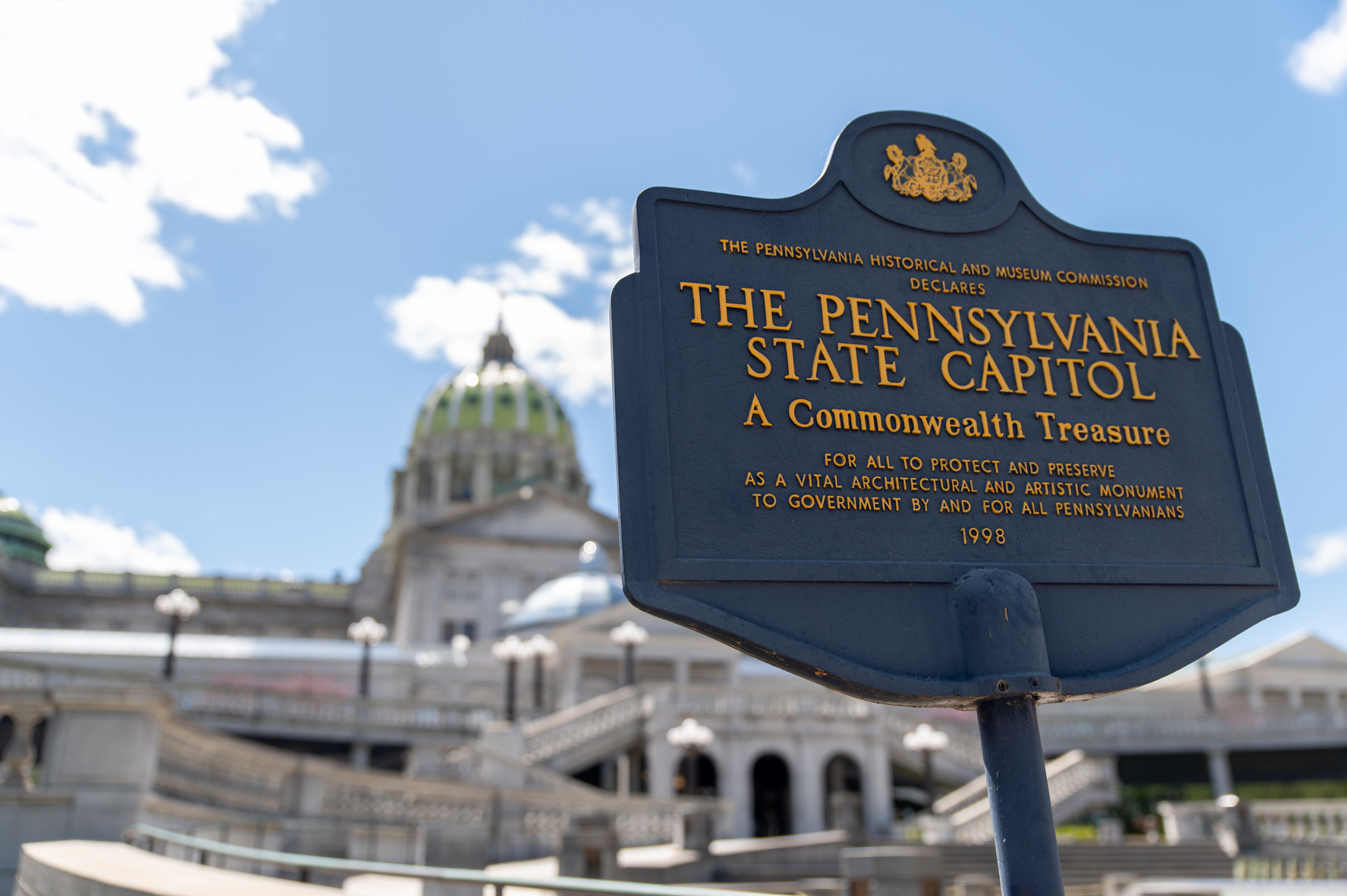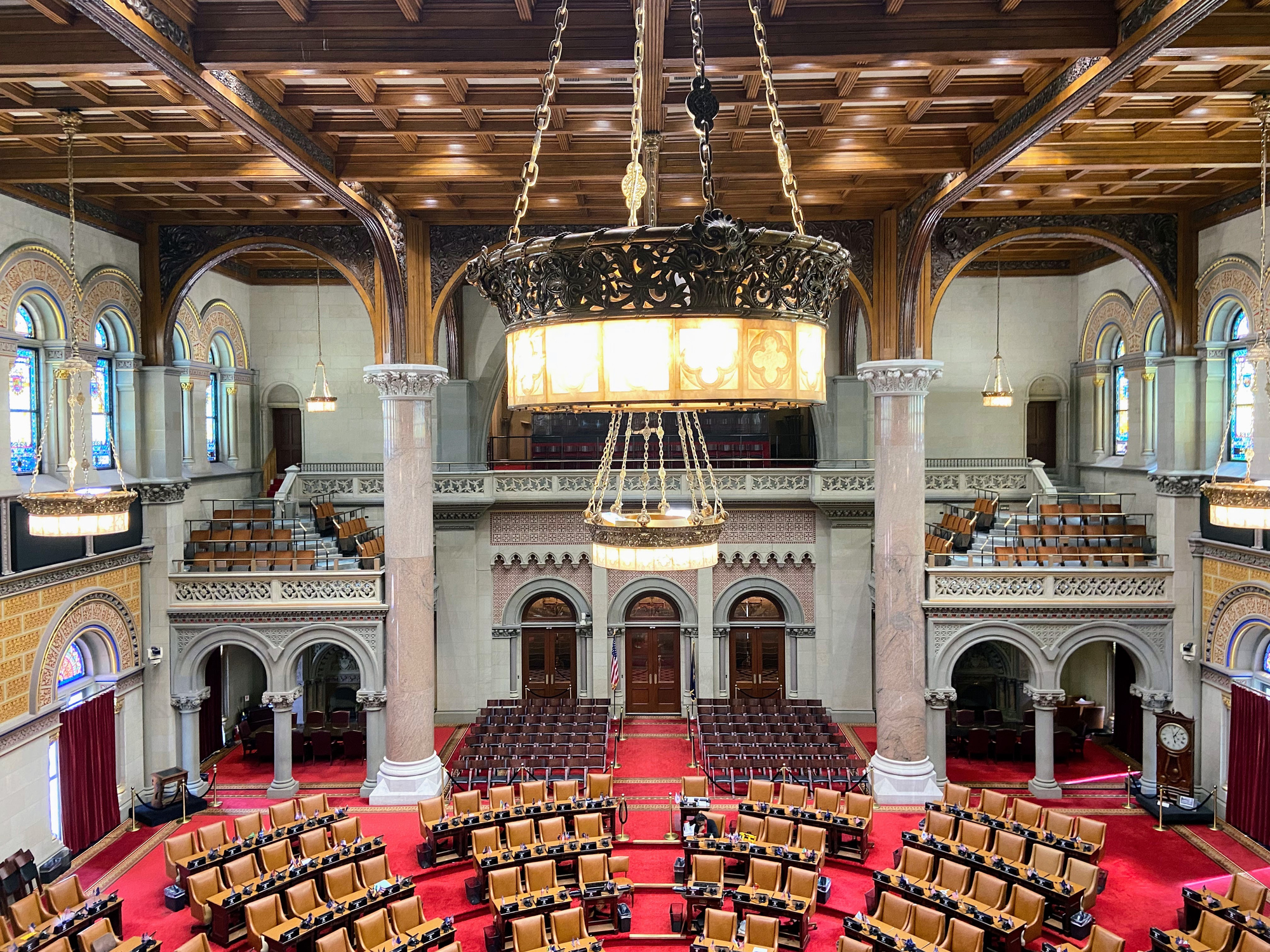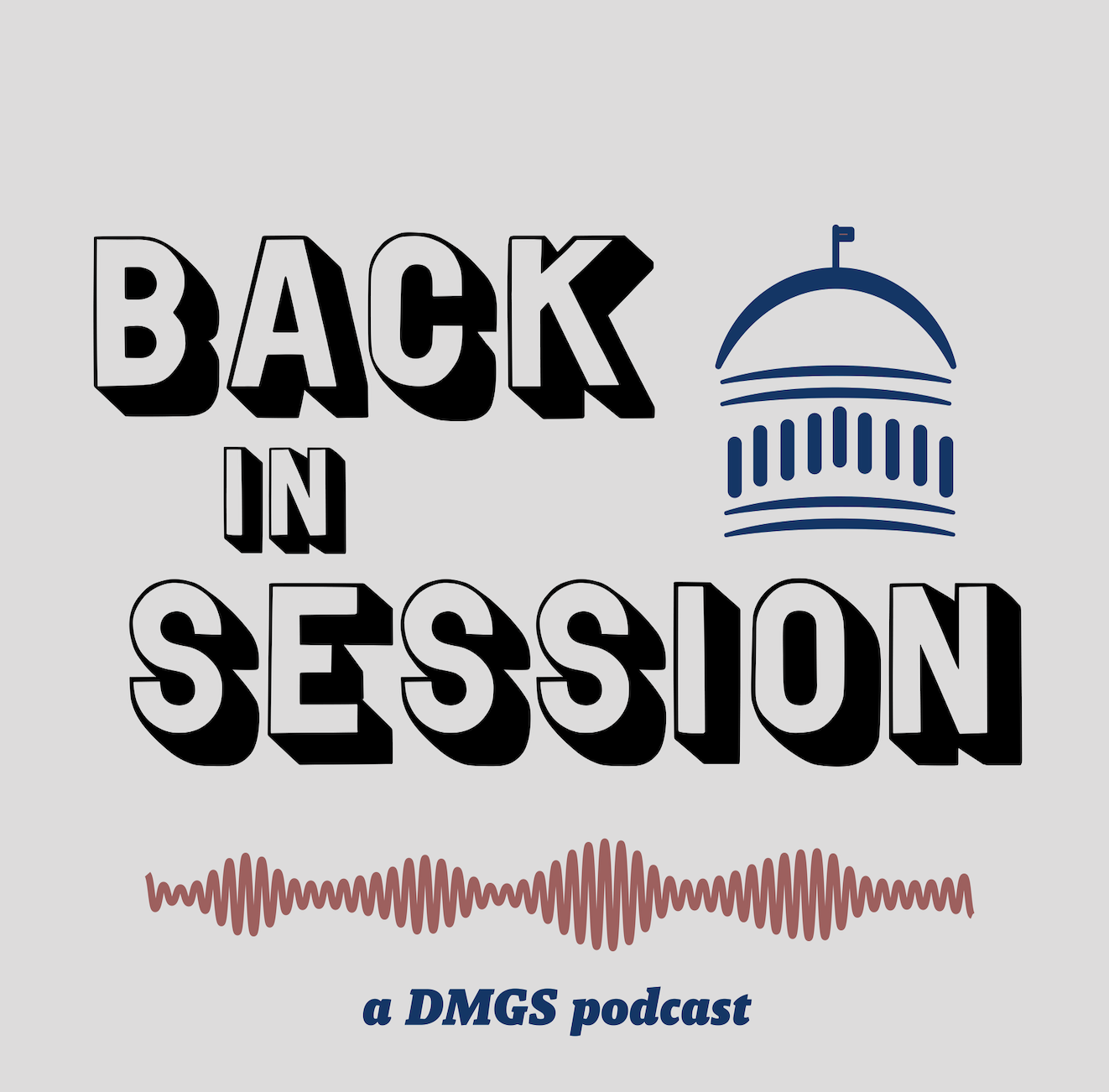Shortly after President Donald Trump entered the White House, he pledged a large investment in America’s infrastructure during a nationally televised address to Congress.
“To launch our national rebuilding, I will be asking the Congress to approve legislation that produces a $1 trillion investment in the infrastructure of the United States—financed through both public and private capital—creating millions of new jobs,” the President said during his February speech.
The American Society for Civil Engineers gave American infrastructure a D+ in its 2017 report card. “Deteriorating infrastructure is impeding our ability to compete in the thriving global economy, and improvements are necessary to ensure our country is built for the future,” the report said. “While we have made some progress, reversing the trajectory after decades of underinvestment in our infrastructure requires transformative action from Congress, states, infrastructure owners, and the American people.”
The report also said current road conditions cost the country $160 billion in time and money every year, while a report from the Federal Highway Administration says the country’s transit system has a $90 billion backlog on repairs. Democratic lawmakers have long-supported federal dollars to help improve America’s roads, bridges, dams, airports and tunnels. Trump’s plan offers a rare opportunity for bi-partisan support in an increasingly fractured political environment.
While a final proposal has yet to be agreed upon, Trump has called for a public-private partnership, but that seems more viable in urban areas where companies can recoup money by levying tolls. In rural areas, where less people live, projects may not entice enough investment because of revenue concerns.
In early May, President Donald Trump signaled that he’s open to raising the federal gas tax to help subsidize infrastructure improvements.
“It’s something I would certainly consider,” the President said to Bloomberg News in an interview. His statement underscores an issue that’s plagued politicians for years. The last time Congress increased a nationwide gas tax was in 1993, when lawmakers approved a 19.3 cent per gallon tax on gasoline, and a 24.3 cent per gallon tax on diesel fuel. However, that tax has not adjusted for inflation, and the Highway Trust Fund has not kept pace. Since 2008, the federal government has injected $143 billion in the fund, while the tax has generated roughly $34 billion a year. However, the federal government usually spends $50 billion per year on transportation projects, leaving a $16 billion annual shortfall.
The Congressional Budget Office said the fund will become insolvent by 2021 without additional funding. According to the Joint Committee on Taxation, increasing the federal tax to 35 cents per gallon will create an additional $473.6 billion over a period of 10 years.
The Chamber of Commerce, AAA auto club and the American Trucking Association support a new gasoline tax. After the 2014 mid-term elections, the group sent a joint letter to the 114th Congress that lends support for a bill that increases the gas tax.
“While no one wants to pay more, we urge you to support an increase to the federal fuels user fee, provided the funds are used to ease congestion and improve safety, because it is the most cost efficient and straightforward way to provide a steady revenue stream to the Highway Trust Fund.”
However, critics believe a gas tax will hurt working families by leveling fees on middle class commuters, many of whom supported Trump. Low gas prices may provide cover for a tax increase, but a sharp spike in gas prices could change consumer sentiments. In an interview with CNBC, Chevron CEO John Watson, pushed back against a tax on gas.
“I think a good first step would be to evaluate where existing taxes are going,” he said. “In other words, we have road taxes today. How are they being used? Are they being put to good use in rebuilding our infrastructure?”
In light of the debate, several states have increased their respective gas tax to shore up roads, bridges, tunnels and other state-operated transportation systems.Since 2015, sixteen states and the District of Columbia have enacted legislation to increase taxes on gas that help support infrastructure programs. According to American Road and Transportation Builders Association, voters approved 269 of the 361 transportation funding measures that appeared on township, city, county or state ballots in 2016. Many of these initiatives were approved in Democratic and Republican-dominated regions of the country. Furthermore, Louisiana, Minnesota, Oklahoma and Oregon have transportation funding measures pending in their respective legislatures.
States Enacting Gas Taxes in 2017
California
The State Senate approved a 10 cent per gallon tax hike in April as part transportation bill estimated to raise $5.2 billion a year to repair state roads and highways. The legislation, which was backed by Governor Jerry Brown, increases the per gallon tax rate from 18 cents to 30 cents. The law also mandates $100 annual fee for electric cars, as well as annual fees ranging from $25 for cars valued at or under $5,000, to $175 for a car worth $60,000 or more. About $34 billion of the first $52 billion would go to repairing roads, bridges, highways and culverts, with most of the money split 50-50 between state and local projects.
Michigan
Michigan drivers saw a 7 cent tax increase in fuel prices at the beginning of the year, increasing a 19 cent per gallon tax to 26.3 cents per gallon, while diesel fuel will increase 11.3 cents from 15 to 26.3 cents per gallon as well. Lawmakers also approved a 20 percent increase in vehicle registration fees, while gas-electric hybrid and electric vehicles will experience an added $47 and $135, respectively.The hike is the first gas tax increase in 20 years, and aims to fund crumbling bridges and roads with an additional $2.3 billion over the next four years. The plan allocates 61 percent of the funding to counties, cities and villages, while the rest goes to state projects.
Indiana
Governor Eric Holcomb signed a $1.2 billion highway improvement plan in April which increases the Hoosier gas tax from 18 cents to 28 cents per gallon in July. Furthermore, registration and licensing fees will increase by $15. There’s also a $50 fee on hybrids and a $150 fee on electric cars. In addition, Holcomb intends to draft a plan that adds tolls for certain interstate projects by the end of 2018.
Montana
The Montana house assembly approved a bill this year that will levy a 6 cent per gallon gas tax increase phased-in over 6 years. More than four percent will take effect on July 1, while the remainder is implemented in 0.5 cent increments between 2019 and 2022. The Montana tax is expected to generate $28 million in 2018, and more in future years to help repair state roads and bridges, as well as the construction of new ones.
South Carolina
On May 10 the South Carolina House and Senate overrode a veto from Governor Henry McMaster to approve an infrastructure bill that increases the state’s gas tax. The legislation will enact a 12 cent per gallon increase phased in over six years, with a two cent increase occurring in July. The tax will eventually reach 28.75 cents per gallon while generating $600 million for infrastructure projects throughout the state.
Tennessee
The House and Senate approved a bill sponsored by Governor Bill Haslam, which would generate $350 million for the state’s highway fund, and boost road revenues for cities and counties. The gas tax will rise by 6 cents per gallon and the diesel tax by 10 cents on July 1. The bill also has several fee increases, including a $5 car registration increase and a $100 fee on electric car users
States Enacting Gas Taxes in 2016
New Jersey
In October 2016, Governor Chris Christie signed a bill that increased the gasoline tax to 23 cents per gallon. The bill marked the first tax hike of Christie’s tenure, and the first tax increase on gas since 1988. The law takes the second lowest gas tax rate from 14.5 cents per gallon, to 37.5 cents, the seventh highest. The law levies diesel users with a 15.9 cent per gallon tax increase, totaling more than 27 cents per gallon.
The bill will generate $1.23 billion annually to help finance an eight year, $16 billion transportation program. The legislation comes after the state’s Transportation Trust Fund, which helps pay for Garden State roads, bridges and railways, had no money to pay for new projects over the summer.
After Christie signed the bill in October, voters approved a November referendum to amend the state’s constitution to allocate the tax revenue to transportation projects. The law prevents lawmakers from reallocating the money to different projects.
States Enacting Gas Taxes in 2015
Georgia
The Georgia Legislature enacted the Transportation Act of 2015, increasing the excise gas tax by 7.5 cents per gallon, along with a four percent state sales tax, to 26 cents per gallon. These rates will then adjust to Consumer Price Index Every year. The money accrued from the tax will allocate to future state transportation projects. Additionally, the state will also collect a $5 per night hotel fee, as well as fees for heavy trucks and a $200 registration fee for electric cars. The law also eliminates a $5,000 tax credit for anyone who purchases an electric car. House Bill 170 also allows counties and municipalities to levy a 1 percent use tax on all motor fuels. The bill aims to collect $900 million a year to help fund transportation projects throughout the Peach State.
Idaho
Idaho’s gas tax increased 7 cents after state lawmakers approved a funding bill in April 2015 to help raise money for road repairs. The house bill increased the gas tax from 25 to 32 cents, to help raise more than $95 million a year. The accrued revenue is then split between local governments and state highway departments (60/40). Idaho also stipulates a $145 registration fee for an electric car, and a $75 fee for hybrid vehicles. However, a house bill introduced in 2017 will eliminate those fees if approved by the Governor.
Iowa
Governor Terry Branstad signed a bill in February 2015, which increased Iowa’s gas tax from 20 cents to 30 cents per gallon. The bipartisan initiative provides $215 million in annual funds for city, county and state roads. The gas tax increase received support from the Iowa Farm Bureau, the Chamber of Commerce, the trucking Industry, the Iowa State Association of Counties and the Iowa County Engineers Association. The gas tax legislation was the first fuel tax increase since 1989.
Kentucky
Kentucky lawmakers approved legislation pegging the gas tax to the average wholesale price of gas over a three-month span. However, a $1.46 drop in gas prices in 2015 created a significant shortfall in the Commonwealth’s transportation budget. As a result, the lower gas taxes helped create a $125 million gap for transportation projects in local municipalities and townships, as well as state highways. To ensure a steady stream of revenue, lawmakers approved a 26-cent minimum for the gas tax rate.
Nebraska
State legislators overrode a veto from the Governor to increase the state’s gas tax by cents per gallon, creating roughly $75 million a year in additional funding for transportation projects. The law says the gas rate will increase 1.5 cents every year for the next four years, through 2019. The State’s Transportation Innovation Act is estimated to raise $400 million. Nebraska’s gas tax has three components. This legislation will impact the fixed tax, which is set by state law at 12.3 cents per gallon in 2017. Meanwhile, the wholesale tax is pegged at the wholesale price and the variable tax adjusts every six months to meet the funding demands of previously approved state roads projects. The gas tax currently sits at 27.3 cents per gallon.
North Carolina
Governor Pat McCrory signed a bill reducing the fuel tax from 37.5 cents per gallon to 34 cents per gallon by 2016. In January 2017, the gas tax began using a formula that accounts for population, energy prices and the consumer price index to help adjust the rate. The reformed gas tax formula takes population and energy prices into account when calculating future gas tax increases in the years ahead. The first of those increased the rate to 34.3 cents per gallon.
South Dakota
Governor Dennis Daugaard signed legislation that increased the gas tax from 22 cents per gallon to 28 cents. The legislation also increases the excise tax on vehicle registration from three to four percent and increases license plate fees for noncommercial vehicles by 20 percent. The fuel tax hike will generate an estimated $40.5 million annually, while the excise tax increase will produce an additional $27 million to $30 million. Most of the revenue generated is allocated to state roads and local bridges. The new bill allows municipalities to levy their own taxes to repair roads in their jurisdiction.
Utah
State lawmakers approved legislation to increase the state’s gas tax by 5 cents per gallon from 24.5 cents. The legislation levies a 12 percent wholesale tax on fuel and pegs future increases to a formula that considers fuel prices and inflation. In March 2017, the state house voted to pass fuel tax increases of .6 cents per gallon beginning in 2019 and 1.2 cents a gallon in 2020, essentially reworking the formula established two years prior.
Washington
The Governor signed a 16-year transportation revenue package in August 2015, which increases the state’s gas tax to 44.5 cents per gallon. The legislation is part of the state’s $16 billion transportation project aimed at improving highways and roads, as well as non-highway projects like walkways, bike paths and transit systems. The two-part tax hike increased rates by an additional 4.9 cents a gallon, putting the total tax at 49.4 cents.
Latest News
Photo credit: iStock.com/Hamburg Studios As Pennsylvania continues to navigate an evolving energy landscape, state leaders are proposing new approaches to ensure reliability, affordability, and sustainability. Governor Josh Shapiro recently announced his “Lightning Plan”, a six-part [...]
Photo credit: iStock.com/StudioGraphic As technology continues to evolve, digital driver's licenses (also known as mobile IDs) are gaining traction across the United States. States are increasingly exploring legislative measures to modernize driver identification systems, enabling [...]
Photo credit: iStock.com/Ray Tan As the impacts of climate change intensify, several U.S. states are taking legislative steps to address the mounting costs of adaptation and resilience. New York, New Jersey, and Vermont have recently [...]
In this episode of The Back in Session Podcast, hosts Ryan Stevens and Ryan DeMara are joined by Brendan Williams from PBF Energy. They delve into the state of energy policy, the refining sector, and [...]






Stay In Touch